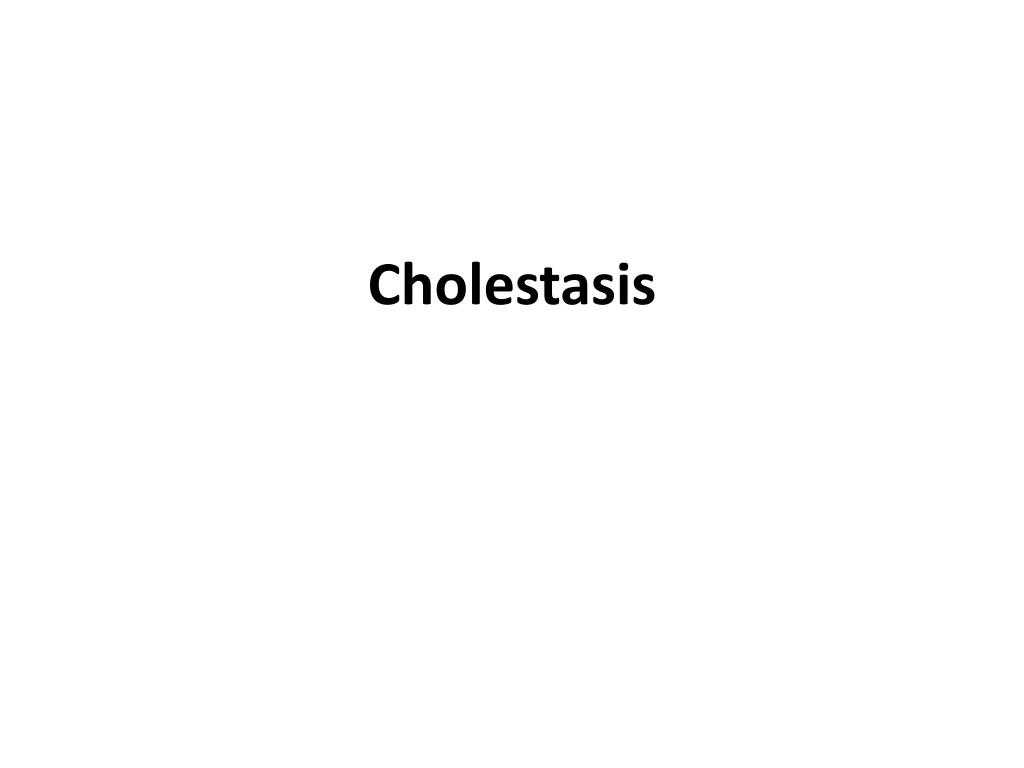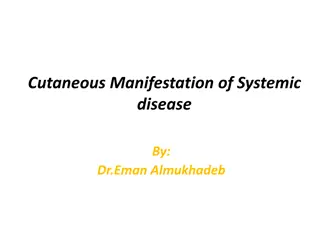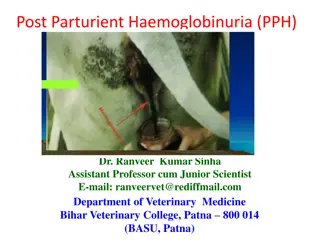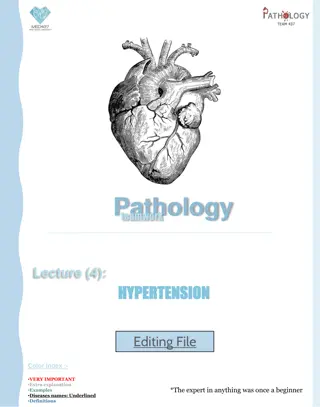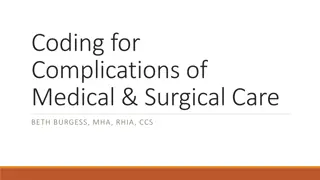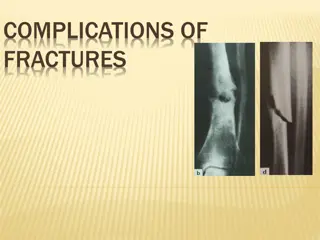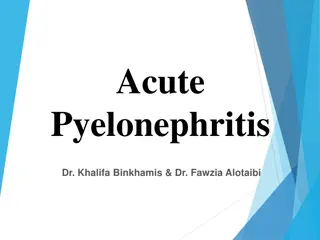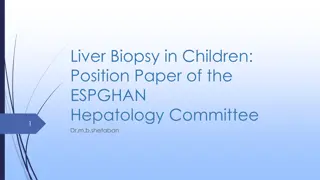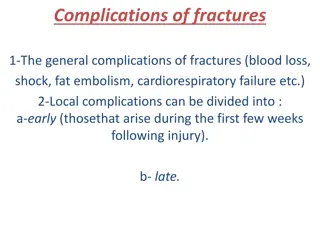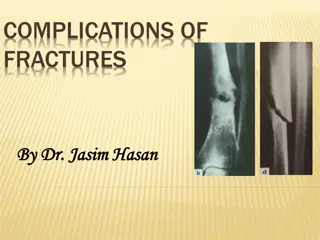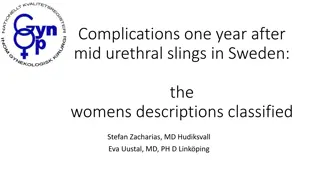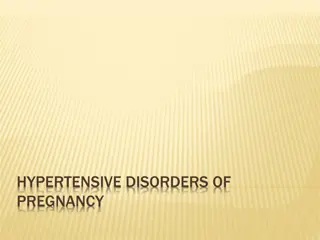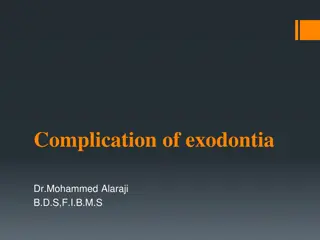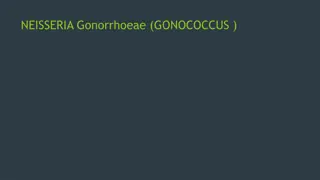Understanding Cholestasis: Etiology, Clinical Manifestations, and Complications
Cholestasis is characterized by reduced bile flow and elevated direct bilirubin. It is critical to differentiate it from neonatal jaundice. In conditions like biliary atresia and 1-antitrypsin deficiency, early diagnosis and intervention are crucial to prevent liver failure. Clinical manifestations vary, with biliary atresia presenting jaundice shortly after birth and progress to cirrhosis if not treated promptly. Neonatal hepatitis and 1-antitrypsin deficiency also pose risks of liver disease. Awareness of these conditions and timely management are essential for favorable outcomes.
Download Presentation

Please find below an Image/Link to download the presentation.
The content on the website is provided AS IS for your information and personal use only. It may not be sold, licensed, or shared on other websites without obtaining consent from the author. Download presentation by click this link. If you encounter any issues during the download, it is possible that the publisher has removed the file from their server.
E N D
Presentation Transcript
Etiology and Epidemiology Cholestasis is defined as reduced bile flow and is characterized by elevation of the conjugated, or direct, bilirubin fraction. This condition must be distinguished from physiological neonatal jaundice, in which the direct bilirubin is never elevated . Neonatal jaundice that is secondary to unconjugated hyperbilirubinemia is the result of immature hepatocellular excretory function or hemolysis, which increases the production of bilirubin. When direct bilirubin is elevated, many potentially serious disorders must be considered . Emphasis must be placed on the rapid diagnosis of treatable and potentially imminently lethal disorders, especially biliary atresia and metabolic disorders, such as galactosemia or tyrosinemia.
Clinical Manifestations The jaundice of extrahepatic biliary atresia (biliary atresia) usually is not evident immediately at birth, but develops in the first week or two of life. The reason is that extrahepatic bile ducts are usually present at birth but are then destroyed by an idiopathic inflammatory process. A side from jaundice, these infants do not initially appear ill. The liver injury progresses rapidly to cirrhosis; symptoms of portal hypertension with splenomegaly, ascites, muscle wasting, and poor weight gain are evident by a few months of age. If surgical drainage is not performed successfully early in the course (ideally by 2 months), progression to liver failure is inevitable.
Neonatal hepatitis is characterized by an ill-appearing infant with an enlarged liver and jaundice. There is no specific diagnostic test. If liver biopsy is performed, the presence of hepatocyte giant cells is characteristic. Cytomegalovirus, herpes simplex virus, and syphilis must be ruled out. Hepatobiliary scintigraphy typically shows slow hepatic uptake with eventual excretion of isotope into the intestine. These infants have a good prognosis overall, with spontaneous resolution occurring in most.
1-Antitrypsin deficiency presents with clinical findings indistinguishable from neonatal hepatitis. Only about 10-20% of all infants with the genetic defect exhibit neonatal cholestasis. Of these affected infants, about 20-30% develop chronic liver disease, which may result in cirrhosis and liver failure. Life-threatening 1-antitrypsin deficiency occurs in only 3-5% of affected pediatric patients. 1-Antitrypsin deficiency is the leading metabolic disorder requiring liver transplantation.
Alagille syndrome is characterized by chronic cholestasis with the unique liver biopsy finding of paucity of bile ducts in the portal triads. Associated abnormalities in some (syndromic) types include peripheral pulmonic stenosis or other cardiac anomalies; hypertelorism; unusual facies with deepset eyes, prominent forehead, and a pointed chin; butterfly vertebrae; and a defect of the ocular limbus (posterior embryotoxon). Cholestasis is variable but is usually lifelong and associated with hypercholesterolemia and severe pruritus. Progression to end-stage liver disease is uncommon. Liver transplantation sometimes is performed electively to relieve severe and uncontrollable pruritus.
Laboratory and Imaging Studies Noninvasive studies may aid a rapid diagnosis. Early imaging studies are performed to evaluate for biliary obstruction and other anatomical lesions that may be surgically treatable. When necessary to rule out biliary atresia or to obtain prognostic information, liver biopsy is a final option .
Treatment Treatment of extrahepatic biliary atresia is the surgical Kasai procedure, in which the fibrotic extrahepatic bile duct remnant is removed and replaced with a roux-en-Y loop of jejunum. This operation must be performed before 3 months of age to have the best chance of success. Even so, the success rate is low; many children require liver transplantation. Some metabolic causes of neonatal cholestasis are treatable by dietary manipulation (galactosemia) or medication (tyrosinemia); all affected patients require supportive care. This includes fat-soluble vitamin supplements (vitamins A, D, E, and K) and formula containing medium-chain triglycerides, which can be absorbed without bile salt induced micelles. Choleretic agents, such as ursodeoxycholic acid, may improve bile flow in some conditions.
